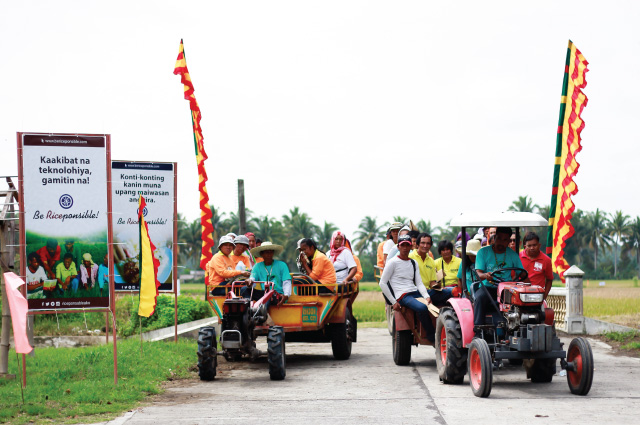 A PhilRice-IRRI study recommends that the country should focus on increasing rice yield, reducing production costs, and improving milling efficiency to boost PH’s rice competitiveness.
A PhilRice-IRRI study recommends that the country should focus on increasing rice yield, reducing production costs, and improving milling efficiency to boost PH’s rice competitiveness.
The two institutions co-implemented the study titled Benchmarking the Philippine Rice Economy Relative to Major Rice-Producing Countries in Asia.
Comparative studies were done in sites representing irrigated and intensively cultivated areas in six countries: Philippines (Nueva Ecija); China (Zheijang); India (Tamil Nadu); Indonesia (West Jave); Thailand (Suphan Buri); and Vietnam (Can Tho).
“We must increase rice yield by promoting hybrid rice technology coupled with appropriate crop management practices in suitable farming areas,” said Dr. Flordeliza H. Bordey, project lead of the study.
Meanwhile, Dr. Santiago R. Obien, PhilRice’s first executive director, recognized the country’s rice technologies as its asset to be more competitive. Obien proposed to increase fertilization rate of hybrid rice so it can better contribute to increasing the country’s rice production.
Farm mechanization was also among the major recommendations of the study to reduce production costs. Use of the combine harvester was highlighted. Direct-seeding was also noted.
“Mechanization and other labor-saving technologies are oftenly met with objections because of labor displacement. Hence, job generation is important beyond the agriculture sector such as construction and factory works,” Bordey explained.
To reduce processing and marketing costs, milling efficiency improvement was suggested. Breeding and engineering solutions were also proposed. Among them were breeding varieties with similar grain shape and length, and with high head rice recovery; adopting mechanized drying; and increasing capacity utilization of big rice mills through provision of custom milling services.
“In the long run, investing on rice R&D is in the right direction,” Bordey said. She added that new technologies and strategies are needed so the country can better position itself relative to its neighbors.
“This [study] will help our government, particularly our leaders in the Department of Agriculture, in formulating rice policies that would provide the necessary support to our farmers,” said Dr. Madonna Casimero, senior scientist of IRRI.
“We can achieve rice security by producing enough affordable supply. Hence, we should start our quest for competitiveness now,” Bordey concluded.




